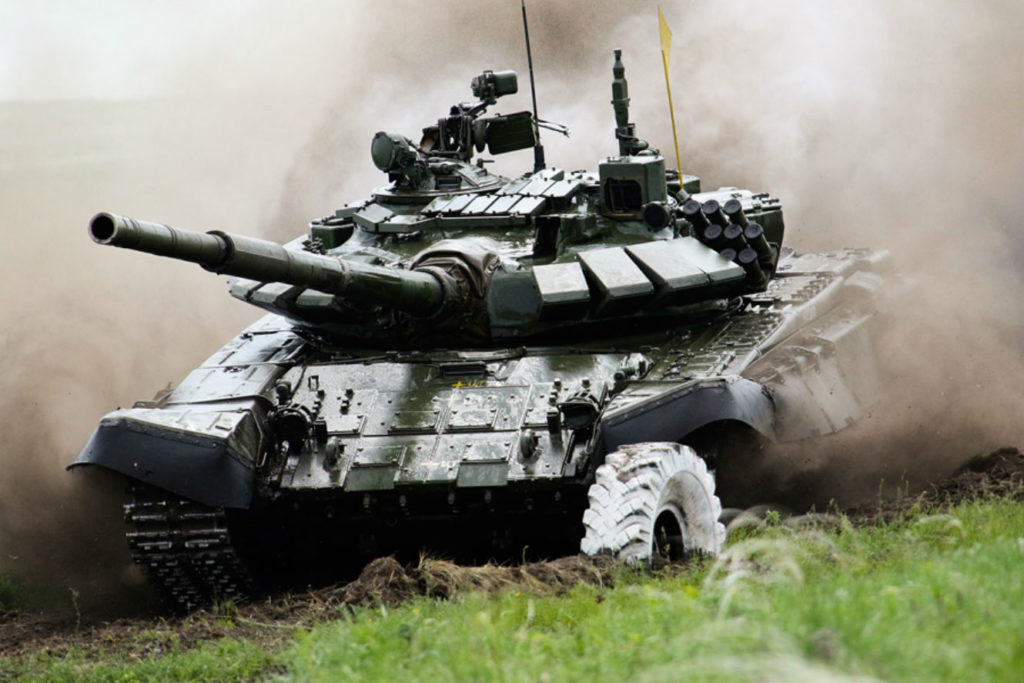False Alert: Is Russia Beefing Up Forces on NATO’s Border?

With NATO’s Warsaw Summit beginning today, NATO leaders are expected to decide for the rotational deployment of four multi-national battalions (~4,000 men) in the three Baltic states and Poland. In addition, in 2017, the Pentagon will send a full brigade (~5,000 men), permanently roaming between NATO’s eastern allies (including Poland, Slovakia, Romania, and Bulgaria as well as the Baltic states).
NATO’s new deployment seems modest in comparison to Russia’s conventional military superiority in Russia’s Western Military District (~300.000 men), which stretches across a large geographical area from the western city of Pskov all the way to the Urals. And if Russia is “building up” forces close to the Baltic borders then this deployment becomes increasingly justified, right?
On May 4, Reuters reported that “Russia will reinforce its western and southern flanks with three new divisions by the year-end”. Russian Defence Minister Sergei Shoigu commented: “The Ministry of Defence has adopted a series of measures to counter the growing capacity of NATO forces in close proximity to the Russian borders.”
In an alarmist tweet from the Estonian Permanent Mission to NATO from July 6, a map contained in a Bloomberg article is copied, forcefully showing the build-up of three Russian divisions (each consisting of 10,000 to 20,000 men), with one of them located close to the Baltic borders.
If that were true, and given that Russia has only two years ago invaded parts of neighboring Ukraine and annexed Crimea, Baltic allies would seriously have to worry. A reinforcement of up to 20,000 men in close vicinity would further tip the balance in Moscow’s favor and would make a mockery out of NATO’s current reinsurance policy. It could be seen as the overture to another Russian military adventure. The problem is that none of the alleged “facts” is entirely true.
What is true is that the Russian Ministry of Defence is taking a turn in its process of reforming its armed forces. In military reforms initiated in 2008, Russia abandoned the division level in favor of smaller and more rapidly deployable brigades. Now, they are returning to the division structure, which indicates that the Russian leadership assesses the chances for a mid- to large-scale military conflict as more possible. This fact alone should cause concern.
However, that does not mean that Russia is creating additional forces. What is known is that already existing and deployed brigades will be merged to form two new divisions in the Western Military District and one in the Southern Military District. Furthermore, two brigades, currently stationed in the Central Military District, will be put under the control of the newly formed command structure.
It is not true is that that at least one of the divisions will be moved close to the Baltics. One will be stationed in Novocherkassk (Oblast Rostov), close to Mariupol, one in Boguchar (Oblast Voronezh) and Valuyki (Oblast Belgorod), north of Ukraine, and one in Yelnya (Oblast Smolensk), east of Belarus. Neither the Kaliningrad nor the Pskov oblasts, bordering Poland and the Baltics has (so far) seen a permanent build-up of Russian tanks and armored combat vehicles.
Russia and almost all NATO member states take part in the Open Skies Treaty, an agreement allowing for mutually monitoring the movement and stationing of forces through national ”spy” planes. No party to the treaty has so far criticized Russia for stationing “additional substantial combat forces” in the Pskov and Kaliningrad Oblasts (bordering Poland and the Baltics) – a pledge Russia made when signing the Adaptation Agreement to the Conventional Armed Forces in Europe Treaty in 1999. For obvious reasons, NATO Secretary General Jens Stoltenberg would be amongst the first say something were Russia to suddenly beef up forces.
Stick with the facts: Russia is engaged in large-scale military exercises with alarming scenarios, its military behaves extremely irresponsible since two years (not to speak of its politicians), and almost all parts of its military are being modernized. But Russia has not (yet) increased its conventional forces close to the Baltics. While this is good news for the three countries, the restructuring of forces close to Ukraine is a problem for Kiev.
NATO’s reassurance measures pale in comparison to what Russia could bring to bear, but Russia’s return to the division level is no additional justification for the Warsaw Summit decisions and possible post-Warsaw calls for even more NATO troops.
Ulrich Kühn (PhD) is a Research Associate at the Institute for Peace Research and Security Policy at the University of Hamburg (Germany). He has been working for the German Federal Foreign Office. Twitter: @UliTKuehn.
Image: Russian MoD

